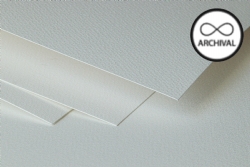St Cuthberts Mill Paper
Call or email:
+44 (0)1749 672015
sales@stcuthbertsmill.com
St Cuthberts Mill Paper
Watercolour
Printmaking
Digital Fine Art

Archival Paper - Making Artwork Last
For paper to last it needs to be specially created with archival properties. St Cuthberts Mill specialises in ONLY making archival papers using our papermaking expertise to make conservation grade sheets.
Why is it important artist paper are archival?
Works of art should be created on archival quality paper, for generations to come to appreciate the work, especially when works are exhibited or sold. These artworks shouldn’t suffer from yellowing, brown spots or general degradation. For students to look back on their catalogue of artwork, again using an archival grade paper is important, so their artistic journey is documented in a portfolio for years to come, otherwise the works may degrade because of poor paper.
BOCKINGFORD, SAUNDERS WATERFORD, MILLFORD and SOMERSET are all archival grade papers.
What is archival paper?
For a paper to be deemed archival, it will be built to last, with the sheet designed to be especially permanent. Archival paper is made with pure raw materials and alkaline paper technology to ensure they are acid free. Papers are buffered with a calcium carbonate alkaline reserve to neutralise acids absorbed from pollution in the atmosphere. All St Cuthberts Mill papers are made to archival standards.
Can a wood based paper be archival?
BOCKINGFORD is a wood based paper which is archival, as it contains high alpha cellulose. The pulps inside BOCKINGFORD are very carefully sourced to ensure they are pure, clean and do not contain lignin (the wood inside BOCKINGFORD is sourced from managed forests within Europe). Lignin is acidic and found in the bark and leaves of a tree. Low grade papers like newsprint have a high amount of lignin, which yellows and ages rapidly. Papers without lignin are called ‘wood-free’, a confusing term, as they do contain wood, but they are free from lignin.
Are cotton papers archival?
Cotton is a very high source of alpha cellulose for papermakers to use. SAUNDERS WATERFORD, MILLFORD and SOMERSET papers are all made from 100% cotton. The cotton used at St Cuthberts Mill is ‘cotton linters’. The linters are the cotton seed hairs and are a bi-product of the textile industry.
Making paper fade resistant
Archival paper should be fade resistant, where the base colour of the paper shouldn’t change, nor should it yellow. At St Cuthberts Mill, any tints are created with pigments (not dyes). Our watercolour papers have NO optical brightening agents inside them (OBA) and ALL our papers achieve at least 6 on the Blue Wool Scale 6 for colour permanence.
What causes paper to yellow?
Old paper that has yellowed can detract from the artwork, as it will not look as the artist intended. Papers designed to be fade resistant and archival that are stored well shouldn’t yellow. Papers can yellow for a variety of reasons. These could be from Optical Brightening Agents going off, to acids inside the raw materials, or acidic papermaking technology. Lower end papers are not made with the same carefully balanced paper technology to ensure the sheet is archival. For artwork, it is best to avoid a sheet with the artificial blue/white shade created with optical brighteners found in copier paper, cheaper papers etc and look for a paper that is acid-free as a minimum.
How to store paper to ensure it lasts
Finished pieces of work should be stored or framed within acid free materials, whether inside a portfolio or framed. If acidic storage materials are used, they will deteriorate the artwork and paper. When displaying a painting, it is important it is hung away from direct sunlight, as the sun’s rays can be hash. Avoid extremes of temperature and humidity to keep work in good condition.
All the packaging materials used by St Cuthberts Mill are carefully tested to ensure they are acid free to keep the archival properties of the paper maintained. When storing unused paper, it is recommended to keep it in its original packaging until required. If a painting is taking an extended period of time to paint, to store in a cool, dark area protected inside a bag during the days it's in its rest periods.
High quality archival papers
Choosing a high quality paper will give the artist a paper that has superior performance for painting or printmaking, and will have the right composition to ensure its longevity. All the papers made by St Cuthberts Mill can be trusted for their performance and archival qualities.

